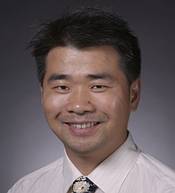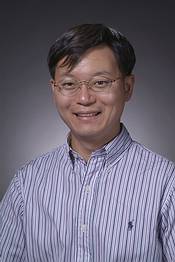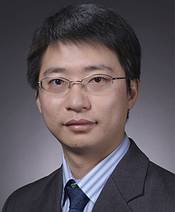Ames, Iowa — Three electrical and computer engineering professors at Iowa State University have received prestigious National Science Foundation CAREER Awards this year. Assistant professors Liang Dong, Jaeyoun Kim, and Lei Ying each will receive $400,000 over a five-year period to fund their research and educational efforts in photonic circuits, optical Micro-Electro-Mechanical Systems (MEMS), and wireless network technologies.

Photonic Circuits for Smart Sensor Technology
Dong’s research focuses on developing a state-of-the-art, universal photonic circuit platform that will advance smart sensor applications in fields such as photonic computing, optical communication, environmental monitoring, biochemical defense, and lab-on-a-chip technology.
“The main objective of my research is to create a platform that will allow engineers and scientists to dynamically configure/reconfigure, tune/detune, and erase/rewrite various high-speed photonic circuits on a single photonic chip upon demand and then use the new platform to improve smart sensor technology,” Dong says.
High-speed photonic circuits are likely candidates to replace standard electrical integrated circuits used in many electronic devices today, Dong adds. The new circuits could help reduce production costs, as well as the size, weight, and power consumption, enabling lower-cost, smaller, and more energy-efficient electronic devices to be designed.

MEMS Technologies to Improve Artificial Eyes
Kim plans to create an ultra-wide field-of-view imaging system inspired by biological systems. He explains that researchers have been trying for years to mimic the compound eye structure of insects and crustaceans because of their naturally wide field-of-view, which is enabled by large curvatures in their eye. The biggest challenge to mimicking the natural eye and its wide field-of-view is developing curvatures in optical elements to replicate ones in natural eyes. Kim plans to address this challenge by developing a new optical MEMS interface structure and polymer techniques.
“My research aims to achieve a dynamically tunable, truly hemispherical vision using inspirations from the eye structure of deep-sea amphipods,” Kim says. “I propose to eliminate the curvature problem, rather than bypassing it, to enhance field-of-view. In a sense, my research is bio-inspired, not just biomimetic, since my artificial eyes will eventually be able to do more things than their natural counterparts.”
Kim’s research could advance technology that doctors use for endoscopic imaging, the military and other organizations use for safety monitoring, as well as technologies in the areas of robotics and automation. Eventually, the technology could create a foundation for developing an artificial eye for humans or be used for assistive devices such as sensors to help guide individuals who are visually impaired.

Improvements to Wireless Networks for Mission-Critical Applications
Ying is establishing a new approach for building wireless networks for mission-critical applications, including wireless mesh networks that are used for emergency response and public safety, wireless sensor networks used for medical technologies and unmanned surveillance of U.S. borders, vehicular networks that use accident warning technology, and in cellular networks for users who use many forms of real-time streaming media. His research will help address and provide solutions for three long-standing weaknesses of wireless communication: bandwidth, channel fading, and interference. For example, in cellular networks, the new technology Ying develops could improve the delivery and viewer experience for people who watch TV on their cell phones.
Past wireless network research harnesses the power of both optimization and stochastic network theories for network design and focus on optimizing long-term throughput of networks. But this focus on throughput could cause unacceptably large delays that significantly degrade performance, explains Ying.
“My research will break away from the throughput first mentality to design networks to meet delay constraints, leading to new network algorithms that can be used to improve networks used in public safety, homeland security, health care, and multimedia communications,” Ying says.
The NSF CAREER award is the most prestigious award offered by NSF in support of early career development activities of teacher-scholars who most effectively integrate research and education within the context of their organization’s mission.
-30-
Contacts:
Dana McCullough, communications specialist, (319) 377-9839, ext. 317, schmidtd@iastate.edu
Liang Dong, assistant professor, (515) 294-0388, ldong@iastate.edu
Jaeyoun Kim, assistant professor, (515) 294-4214, plasmon@iastate.edu
Lei Ying, assistant professor, (515) 294-5353, leiying@iastate.edu